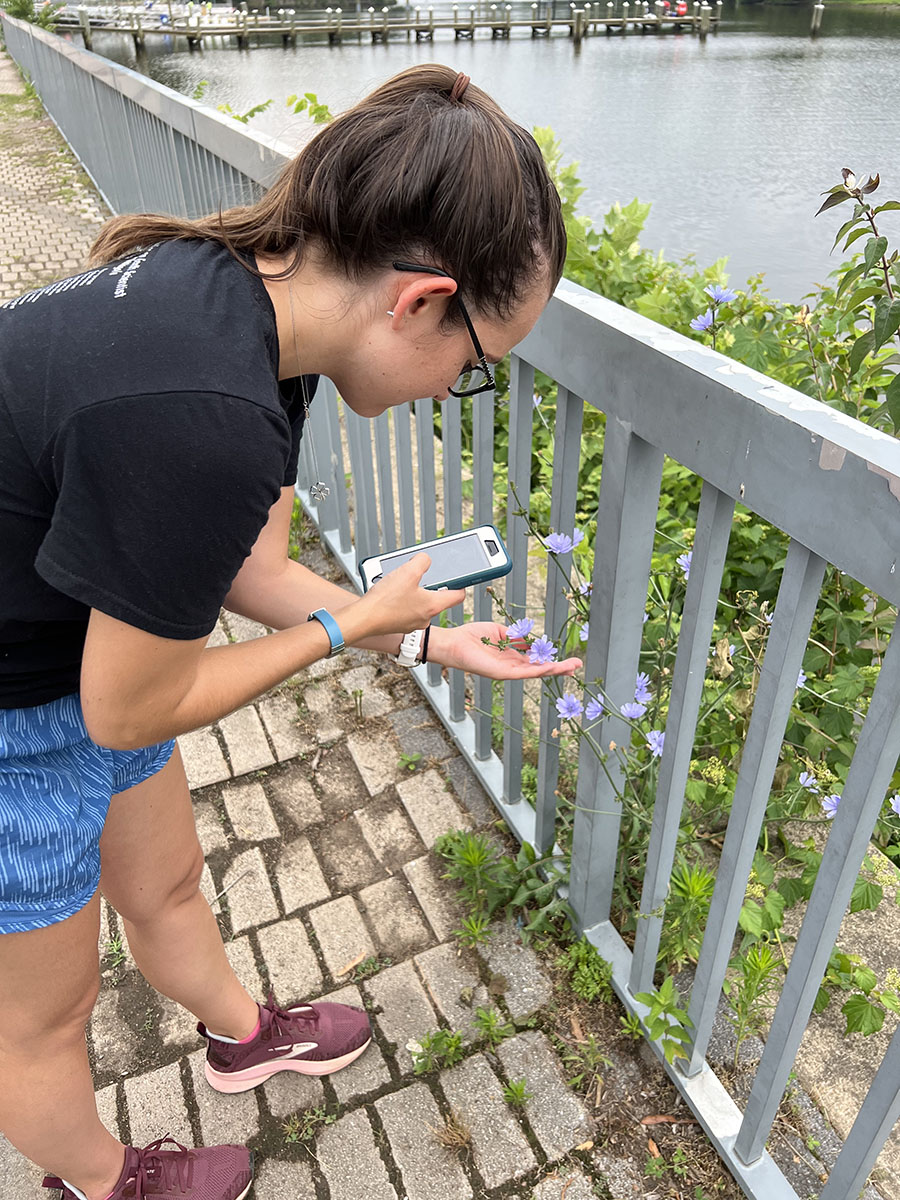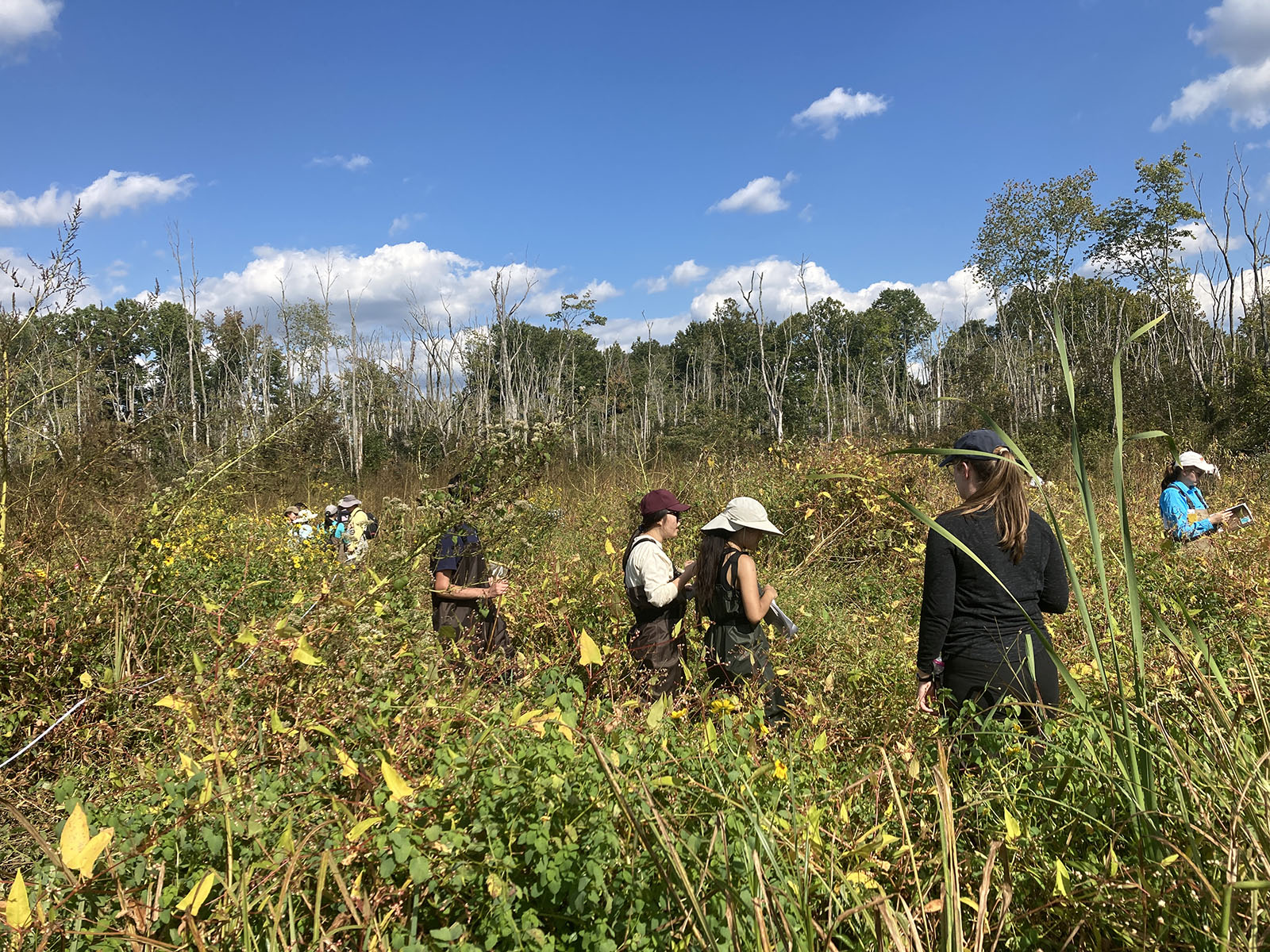Knauss legislative fellowships in Congress help build careers — and they're fun and educational. See our video and fact sheet for details.
The Cure for Plant Blindness: Expanding horizons in graduate school
“Are you suffering from plant blindness?” my teacher, Professor Andrew Baldwin, asked the class.
I was a few weeks into a wetland ecology course, and in that moment, I felt a pit in my stomach. He showed us a few pictures of different types of trees and shrubs, and all of the images looked alarmingly similar. I immediately realized I was suffering from plant blindness—the inability to differentiate between types of plants. My background was in geology; I had no idea how to tell different plants apart!
My advisor had recommended that over summer I take courses outside of my field and my department. He told me I would really like the wetland ecology course, but I remember thinking, “There is no way I will need wetland ecology. I study urban stream chemistry.” (My current research is in assessing the attenuation of salt ions along downstream flowpaths within restoration or conservation areas.)
I signed up for the class, not expecting to learn much applicable information but still with an open mind. I heard there were field trips, and I was excited to explore some wetlands and get out of the lab.
For the first couple of weeks, we learned the basics of wetlands, definitions, sources of water, and types. I developed a false sense of security and felt like I knew wetlands.
Then, the next section of the course happened—plants. As a graduate student in the class, my project would be to identify 30 plants, 20 of them wetland plants.
After asking us if we suffered from plant blindness, Professor Baldwin walked us through different ways to identify plants using the leaf margins, leaf teeth, leaf arrangement, and the types of leaves, such as whether the leaf is compound or simple. As he went through slides of plants, he also recommended we download the iNaturalist app as a tool for plant identification. The app lets you upload a picture of the plant, and it will create recommendations based on your location.

The teaching assistant passed around different plants to pairs of students. We were to first use books as a resource to test the information we had just learned, then confirm our plant identification with iNaturalist. I could tell mine was a pine of some kind, but as someone with little plant knowledge, I felt overwhelmed by all this new material.
Luckily, my partner had taken a botany class and helped me use the book and material we learned from the slides. We confirmed our identification with iNaturalist and identified the plant —a loblolly pine.

After classwork on identification, we went on an all-day field trip to compare a salt marsh and freshwater tidal marsh to learn the methodology for vegetation cover, soil characteristics, soil hydrology, and the dreaded (for me) plant identification. I had never gone to a wetland that required waders, so I grabbed a pair of oversized waders from my laboratory and headed out.
After crossing the Chesapeake Bay Bridge (my first time—I felt like a real Marylander!), we headed to the Chesapeake Bay Environmental Center near Grasonville, Maryland, on the Eastern Shore, to study a salt marsh. We poured out of the vans, grabbed the equipment, and trudged carefully into the salt marsh. In groups, we collected shallow sediment cores to analyze the bulk density and organic matter content of the soil and salinity of the groundwater. We characterized the plant community using 10-by-10-meter plots to measure the species richness and total plant cover.
Then we headed west, back over the Bay Bridge to Patuxent Wetland Park near Lothian, Maryland, to study a freshwater tidal marsh. I quickly learned one way it was different from the saltwater marsh on the Eastern Shore—the muddy soil was a lot trickier to walk in. I wouldn’t recommend grabbing waders two to three sizes too big; I got stuck in the wetland soil and had to be pulled out by some people in the class!

By the end of the field trip, I was able to confidently identify wetland plants (and assess where I would get stuck in the mud). I can safely say that because of this class, I do not suffer from plant blindness anymore.
More importantly, the wetland ecology class gave me a new appreciation for wetlands and studying plant types and communities. I have a better understanding of the interactions on the ecosystem scale, and I’m more mindful of the impacts of the entire watershed on the stream chemistry. Now, when collecting my water samples, I can use the tools gained from the class to understand the impacts of vegetation on urban streams.
Since the class ended, I am more considerate of the effect of vegetation in the watershed. During my last field research season, I noticed there were parks with different vegetation surrounding my urban streams. This observation expanded my research into investigating the impacts of conservation forest and restoration areas on urban stream water chemistry.
Top Left Photo: Professor Andrew Baldwin shows two students how to dig a soil core in the wetland at the Chesapeake Bay Environmental Center in Grasonville, Maryland. Credit: Carly Mass
See all posts to the Fellowship Experiences blog

